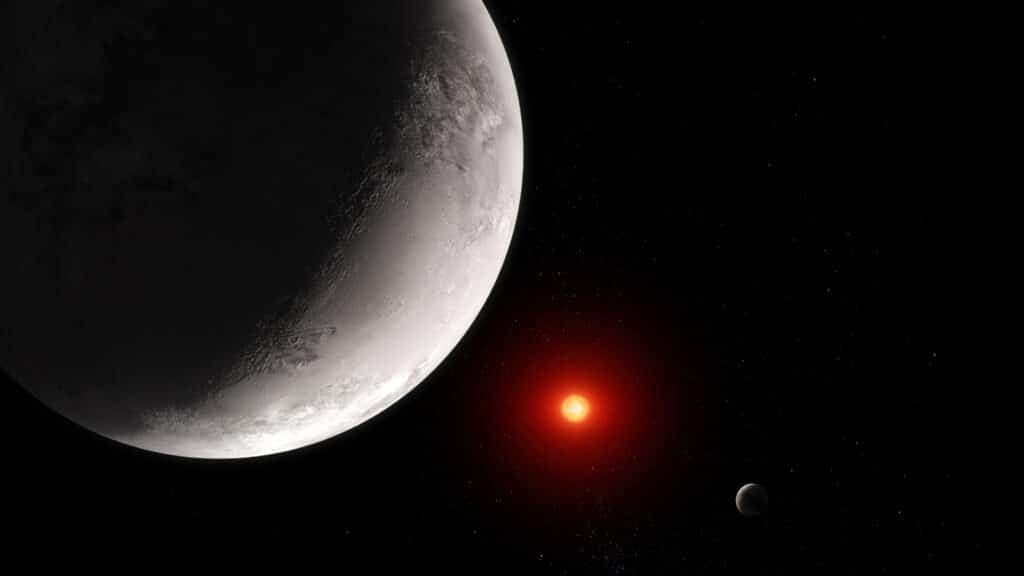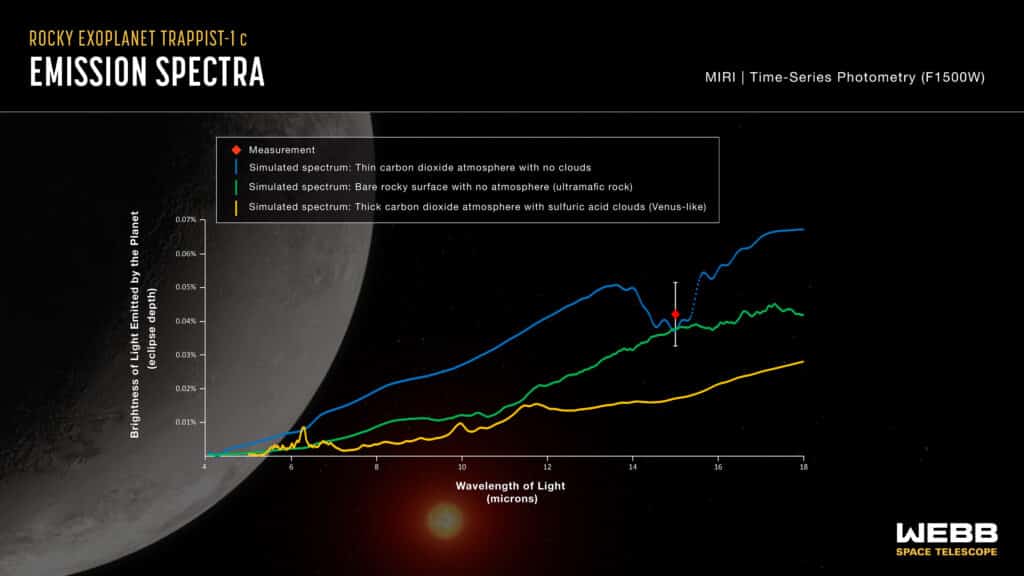A recent study using the James Webb Space Telescope (JWST) has characterized TRAPPIST-1 c as the coolest rocky exoplanet, with a daytime temperature of around 225 degrees Fahrenheit. This discovery is not just an achievement in temperature records but also signifies Webb’s precision in detailing rocky planets resembling those in our solar system.
TRAPPIST-1 c is intriguing as it closely mirrors Venus. “TRAPPIST-1 c is interesting because it’s basically a Venus twin: It’s about the same size as Venus and receives a similar amount of radiation from its host star as Venus gets from the Sun,” explains co-author Laura Kreidberg from the Max Planck Institute, in a statement. Early suppositions had hinted that the exoplanet could possess a dense carbon dioxide atmosphere similar to Venus.
However, the precise nature of the exoplanet’s atmosphere remains a subject of interest, particularly since these findings might shed light on whether planets revolving around red dwarfs, like TRAPPIST-1, can hold the kind of atmospheres essential for life as we understand it. Red dwarfs are the galaxy’s most abundant stars, and the TRAPPIST-1 system alone boasts seven rocky planets similar in mass and size to our solar system’s inner planets.
One primary question is whether these planets hold atmospheres similar to ours. “In the past, we could only really study planets with thick, hydrogen-rich atmospheres,” points out lead author Sebastian Zieba. “With Webb we can finally start to search for atmospheres dominated by oxygen, nitrogen, and carbon dioxide.”

To decipher this, scientists utilized JWST’s Mid-Infrared Instrument to monitor the TRAPPIST-1 system during four instances of a secondary eclipse – when the planet transits behind its star. The emitted mid-infrared light from the planet’s dayside is vital, as it’s directly connected to its temperature, which is subsequently influenced by its atmosphere.
“Our results are consistent with the planet being a bare rock with no atmosphere, or the planet having a really thin CO2 atmosphere (thinner than on Earth or even Mars) with no clouds,” adds Zieba. Notably, this implies that TRAPPIST-1 c doesn’t have a dense atmosphere similar to Venus.
These initial data points hint at the planet’s potential formation with limited water. If the milder TRAPPIST-1 planets formed similarly, they might lack the essential elements for habitability.

A remarkable aspect of this study is the sensitivity JWST displayed. It identified a mere 0.04% decline in brightness during the secondary eclipse, an analogy for which Kreidberg mentioned, “It is extraordinary that we can measure this.” She further celebrated Webb’s capabilities, stating, “Webb’s ability really brings us into a regime where we can start to compare exoplanet systems to our solar system in a way that we never have before.”
As part of JWST’s ongoing endeavors, the next year will see further studies observing the complete orbits of both TRAPPIST-1 b and TRAPPIST-1 c. These observations promise to enrich our understanding of these enigmatic planets and their potential atmospheres.











